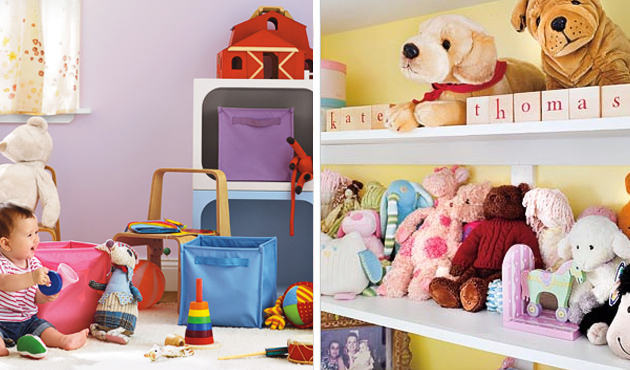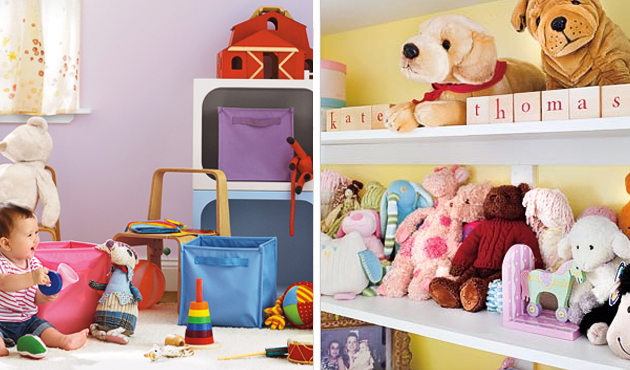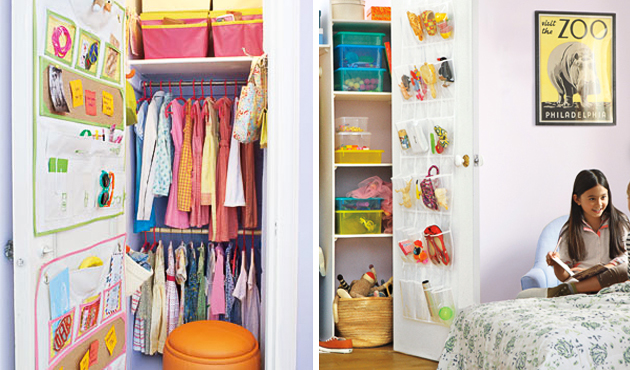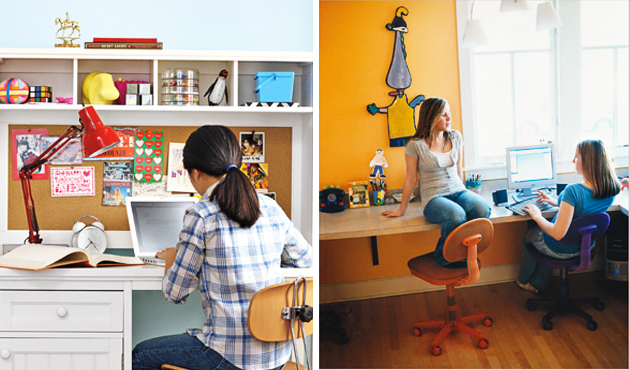
21 Jan Happy Fridays: Rooms that grow with you!
So it can get a little tricky making sure your kids don’t quickly outgrow their bedroom.With new interests and hobbies accruing daily it’s nice to be able to make sure they are getting the most out of their environment. You want to help them grow and stimulate their creativity but without the expensive price tag of a constant home makeover. Luckily I stumbled across this very informative article from one of my favorites, Real Simple! If you have never read the magazine, or checked out their site, you must! So many great ideas and money saving projects. The below post is an article I borrowed from their site that I thought would be a great share.
Rooms That Grow With You
By Lisa Singer Moran

Age: Newborn – 2 years old
Developmental milestone: Exploration of surroundings.
Focus on: The floor.
Right now your child is: Using all her senses to take in the world around her (which explains touching the hair of the woman in front of you in the checkout line and tasting the dog’s food). It’s important for children in this stage to have easy access to their playthings so that they don’t just see but also grab, sniff, and, yes, chew. “You want your child to have a chance to discover a toy on his own and then examine it in depth to see how it tastes and feels,” says Felice Sklamberg, a clinical specialist in pediatric occupational therapy at the New York University Langone Medical Center, in New York City.
Take advantage by: Grouping like items in soft, low bins (Lego Duplo bricks in one, musical toys in another), recommends Sklamberg: “Babies are easily overstimulated, which makes a catchall toy box overwhelming, not to mention harder to access.” Storing items in small bins also makes it easier to swap out toys each week, which is something Sklamberg recommends to avoid sensory overload.

Age: 2 – 4
Developmental milestone: Homing in on a single activity.
Focus on: A defined play space.
Right now your child is: Starting to focus for longer periods of time. Exactly how long is a matter of temperament. Should your child be particularly single-minded, he may stay occupied for as long as 10 minutes. No need to get out the stopwatch. “Any amount of time, even a minute or two, during which children sit and entertain themselves with one thing helps them grow,” says Sklamberg.
Take advantage by: Placing a table and chairs in the child’s bedroom to establish a spot for recreation and creativity. In other words, create an ideal place to look at a book or play with a toy. In doing so, notes Sklamberg, “you’re introducing kids at an early age to the importance of sitting and focusing.” As your child grows and becomes more interested in art, she’ll also have a place to sit and spread out. And do yourself a favor: Consider investing in kid-size chairs that are comfortable and strong enough for adults too. While your tot may not want to cuddle up in a glider chair and look at a book during the middle of the day, she may be more engaged by reading a story with you at a table.

Age: 4 – 7
Developmental milestone: Learning to read.
Focus on: A comfortable nook.
Right now your child is: Into books, whether of the picture-driven, pop-up, or prose variety. “Reading is all about using language to open up a world that’s not immediately present,” says Gillian Dowley McNamee, Ph.D., a professor and the director of teacher education at the Erikson Institute, in Chicago. “What matters most for a child in developing this skill is having conversations with a parent about the narrative of a book.” Having a welcoming place to read with your child (or children) and to ask questions about the book facilitates this learning process. Books of nursery rhymes or poetry, adds McNamee, can be invaluable in teaching wordplay, a critical step to understanding words in print.
Take advantage by: Creating a cozy reading nook—basically a comfortable chair or a beanbag in close proximity to a bookshelf. As your child becomes increasingly interested in chapter books, which she can read on her own, she may want a reading lamp on her nightstand. (Anne of Green Gables can’t wait until morning.)

Age: 7 – 10
Developmental milestone: Becoming more independent.
Focus on: The closet.
Right now your child is: “Enjoying satisfaction from completing tasks on her own,” says Cora Collette Breuner, an associate professor of pediatrics at the University of Washington in Seattle. “It’s also important to give kids in this age range choices—letting them pick out their own clothes, for example.”
Take advantage by: Playing up your child’s independence, without creating too much of a headache for yourself. By arranging clothes in an easily navigable way (school clothes on red hangers, weekend wear on yellow ones), you give her a choice (“Pick from the red hangers”) with Mom-approved parameters. Additionally, tell her she can have friends over, but only if she makes sure that they clean up after themselves; this is a task she can oversee with the help of accessible storage. “You can ditch the label maker, however,” says Pom Shillingford, a New York City–based personal organizer who specializes in families. “Labeling can cause more stress than benefits. It’s easier for friends and babysitters to help clean up if there isn’t an overly complicated system.”

Age: 10 – 14
Developmental milestone: More independent work at home.
Focus on: The desk.
Right now your child is: Capable of handling more responsibility and completing homework assignments on his own—in theory, at least. Reality, however, is another story, says Breuner. “Despite what parenting books may tell you, lower your expectations about how organized the kids, even ones toward the end of this range, can keep their desks and their schoolwork,” she says. If you can, place the desk in a spot in the child’s bedroom in sight of the door, so you can check in discreetly.
Take advantage, or at least keep her on task, by: Establishing a clean work space, with at least four drawers (or compartmentalized shelves), to corral the clutter. “Kids this age are highly distractible. It’s easier for a child to spread out books and notes if there’s as little as possible to demand his attention,” says Breuner. Why four drawers? Donna Goldberg, author of The Organized Student ($15, amazon.com), recommends one for basic supplies (pens and pencils), a technology drawer for iPod and camera accessories, one for stationery and paper, and a junk drawer for all the miscellaneous items that can multiply in a child’s desk. Another key item: an analog clock kept in plain sight, to boost productivity. “When you look at a digital clock, you’re always in the present tense and you don’t see time pass,” says Goldberg. Finally, it’s essential that your child feel involved in the setup process if he’s going to have a shot at maintaining the space, says Goldberg.
Hope this gave you some great ideas! Read the full post here. Happy Friday!




No Comments